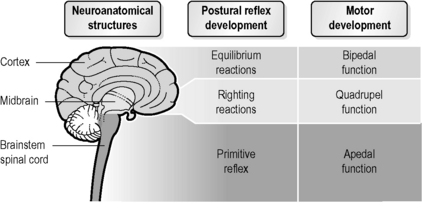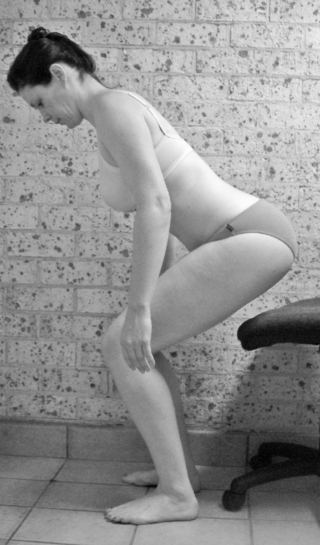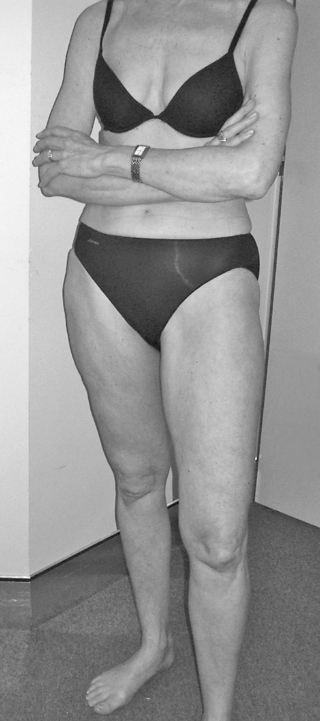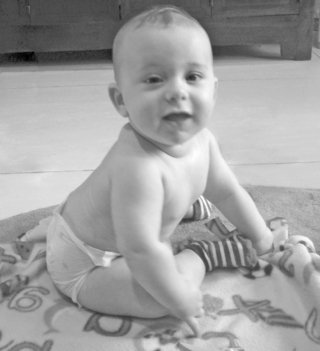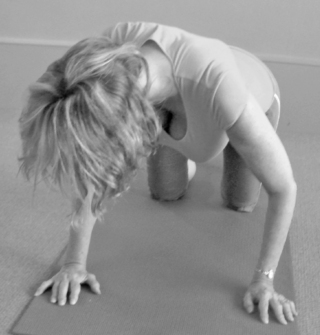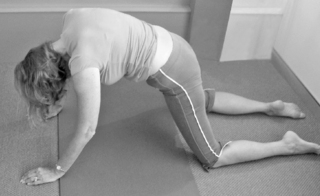Chapter 3 The development of posture and movement
All movement is dependent upon related supporting postures for its control. Posture and movement are interdependent and develop hand in hand.
Motor development theories
The development of our movement control is a journey with gravity. From birth, the process of development begins to establish the basic components and patterns of all our movements. The evolution of effective postural control underlies the development of a reasonably predictable sequence of movement events and behaviors. For instance we learn to turn over, sit, crawl, stand and walk and so on. Theories of early motor development encompass two principal schools of thought:1
Salient aspects of early sensorimotor development
According to Kolar4,5 motor development is automatic and dependent upon sensory orientation, motivation and emotional need. It is characterized by the development of motor patterns which are genetically predetermined, overlap and allow for:
Movement development in utero
Movement is life. It begins as that of cell division in the embryo and as the nervous system begins to mature, movements of the fetus begin to develop. Hartley6 and Bainbridge Cohen7 note the importance of intrauterine movements in helping the nervous system develop. The first nerves to myelinate are, according to them, the vestibular nerves. As the fetus moves and is moved within the mother’s body, sensory information from the vestibular nerves begins to be processed within its CNS. This perception of movement stimulates more movement or a change in movement which in turn elicits new sensory information – we are moved and then we receive sensory feedback about the movement. Sensorimotor learning thus begins in utero.
Neonatal period and change birth – 9 months
At birth, the CNS is still undeveloped. The lower centers of the CNS are more operant which is reflected in the infant’s motor activity being largely influenced by neonatal reflexes, which are automatic, stereotyped and predictable. The baby’s movements are crude with no component of voluntary control or meaningful direction. The body responds mechanically and automatically to a number of influences such as touch, sound, head or body position. This results in changes in muscle tone which then effects a posture and or movement response in a number of consistent patterns – termed ‘the primitive reflexes’.8
Bobath9 considers that normal motor development can be characterized by two sets of processes which are closely interwoven and dependent upon one another:
Primitive postural reflexes: early movement experiences of the neonate
In general, the neonate is flexed and symmetrical in all positions – in supine, prone, vertical or ventral suspension9 due to dominant physiological flexor hypertonus. While he can turn his head he otherwise has poor head control and the only extension is reflex, via the Moro or startle reaction which bilaterally extends the arms. The emerging development of head control begins to initiate the development of extensor tonus. The symmetrical flexor activity starts to be broken up by the appearance of the asymmetrical tonic neck reflex at about 1 month old as the physiological extensor tone starts to appear. The legs are more mobile and show alternate incomplete flexion and extension via the reflex crossed extension kicking which also helps breaks up the symmetrical flexor tonus.
These various automatic reflex postural reactions which make up his early movement repertoire are stimulated by touch or pressure to particular areas of the body, passive movements of the head, torso or limbs, changes of position, changes in relation to gravity, or sudden unexpected sounds, movements, etc. The infant responds to the stimulus by moving toward it or drawing away; these responses support the potential for bonding or defending.6 Importantly, these early responses help ensure survival and provide the infant with the experience of movement and support while he is in the process of developing his own higher level control. As this develops they either disappear or become integrated into higher order patterns of movement control. The timing of their appearance and disappearance, symmetry and intensity helps in the evaluation of early motor function. Their retention, under activity or over activity and asymmetry are indicative of potential motor problems.
Oral reflexes: beginning of head control
The rooting reflex is the first postural reflex that initiates movement of the head.6 Mouth opening is associated with head extension while sucking or mouth closing is related to a sagittal flexion of the skull rocking on the first vertebra, the movement then transferring down the spine heralding the beginning of spinal movement control initiated from the head. Hartley6 notes that if this pattern does not become fully integrated with the closing phase of this action not completely developed, habitual mouth opening and related hyperextended head postures ensue. This very common pattern underlies many neck shoulder and back problems in adulthood.
Other reflexes such as the Babkin and Grasp reflex provide additional stimulus to neck righting (rotation), to neck flexion and the initiation of head righting in supine. They also underlie the pattern for mouth–hand coordination7 and establish midline focus for the mouth and hands.
Anal rooting reflex initiates movements from the tail
When the area around the anus is stimulated the infant will move its tail towards the touch. This reflex underlies the development of spinal movements which are initiated from the tail7(Fig. 3.2). ‘Going long’ from the tailbone also helps achieve a ‘neutral spine’. These important functional actions are invariably difficult in people with back pain.
Galant’s reaction:precursor to lateral movements
Stroking the back on one side elicits a side bending movement. This contributes towards initiating unilateral trunk movement; provides the initial movement for rotation; is the precursor to the initiation of amphibian movement necessary for crawling, creeping and walking; helps break up the symmetrical patterns of flexor and extensor movement and is the beginning of asymmetrical movements.8 If both sides are stimulated together the infant will extend the lumbar spine.7
Abdominal reflex underlies trunk flexion
Stimulation on either side of the navel when supine results in the infant ipsilaterally flexing the lumbar spine. If both sides are simultaneously stroked, the infant will flex the lumbar spine.7 This reflex balances the galant and both contribute to moving the chest and pelvis through space.
First vertical antigravity experiences
The primary standing, primary stepping and placing reactions of the legs contribute towards the first sense of vertical self support. At this time the support reaction is primitive and incomplete as extensor tone is only present to the knees,8 but they assist the infant to overcome the dominant flexor tonus contributing to the development of flexor and extensor tone balance and reciprocal leg movement for future standing and walking.
First extensor experience
The Moro reflex or startle reaction is characterized by reflex extension and abduction of the arms, opening of the hands and crying. It is a response to ‘stress’. The reflex has two phases following the first phase described above, the infant flexes his head, curls his body, flexes and draws his arms across his body and closes its hands as though embracing himself. The legs may extend during both phases, unless they are already extended, in which case they may flex.7 It allows the infant to first symmetrically widen through his chest and upper limbs and then to recover with an embrace. It is then a protective action. The reflex helps develop extensor tone in the arms at a time when physiological flexor tonus is dominant and establishes a base for all opening and closing movements of the torso. As stress is a common contemporary phenomenon, it is common to observe people adopting habitual postures which relate to the second stage Moro (Fig. 3.3).
Early protective responses
Reciprocal limb movements
The amphibian reaction is an important appearance at 6 months of age and remains throughout life.10 When the pelvis is lifted on one side, the arm and leg on the same side automatically flex (Fig. 3.4) This helps further break up the total flexor and extensor responses, produces weight shift and the experience of rotation through the trunk initiated from the pelvis. This is an important functional pattern and with further neuromuscular maturation, the infant develops his own selective control of this movement pattern. It is common that people with spinal pain have difficulty with this movement.
Positive supporting reactions underpin antigravity control
Compensations can begin early
Attention parents and carers! According to Bainbridge Cohen (and others14), the Propping Response occurs when the infant is placed in a position which is higher in relation to gravity than it could attain by ‘pushing up’ itself. The baby responds by ‘fixing’ its limb(s) in ‘total extension’ and propping its body weight without connecting the lines of force from the ground through its proximal limb girdles and through its centre – the spine. This occurs when the baby has not sorted out his own control and parents try to do it for him. There is excess influence from the Tonic Labyrinthine Reflex and under activity from the positive supporting reaction, which will then require excessive tone in the back muscles (Fig. 3.5). She maintains this is a common occurrence in adults with back problems and it is certainly a common finding in the clinical situation. Back pain research has also shown excess back muscle activity with a lack of the flexion relaxation phenomenon in people with back pain.12,13
Tonic attitudinal postural reflexes: produce changes in postural tone and body posture as a result of head position
These reflexes appear before or at birth and usually become integrated into more complex patterns of movement by 4–6 months of age. They are controlled at the spinal level and brain stem (the low brain). These tonic reflexes are not obligatory in normal development. They produce reliable changes in body posture as a result of a change in the head position.1 They consist of:
Tonic labyrinthine prone and supine reflex (TLR)
This is apparent from birth to about 6 months after which it becomes integrated and ‘disappears’. Changes in the position of the head and body in space affects the labyrinths which initiates the sensory input for the reflex arc. Increased postural/ muscle tone develops on the underside of the body with respect to gravity. When the infant is supine this reflex produces an increase in extensor tone; when prone an increase in flexor tonus. If lying on the side, the tone in the underside body is facilitated. The subsequent development of more integrated control of flexion when supine and extension when prone modifies this reflex. This helps develop the patterns of flexor/extensor coactivation needed for spinal alignment and control. Bainbridge Cohen sees that the TLR, in increasing postural tone on the underside of the body, is the basis for ‘grounding’, drawing us down to the earth7 – that from and through this, we can begin to move towards finding grounding in our verticality.
Asymmetrical tonic neck reflex (ATNR)
This is readily apparent at birth for two or more months. If the head is turned to the side, the arm and hand on the face side will extend reflexly, while the arm and leg on the skull side will flex. Its contribution in movement development is that it begins to break up the symmetrical flexion and extension patterns of movement; helps develop an alternation of these patterns; and enables each side of the body to be used separately. It also prepares the way for the integration of neck turning, visual fixation and reaching. As such it is fundamental to the establishment of visually directed reaching and eye hand coordination.8
Integration and contribution of postural reflexes in the development of movement
Bainbridge Cohen7 also considers that the primitive reflexes establish the basic gross patterns of function that utilize and underlie all movements. She says:
In early motor development, primitive reflexes are more obligatorily but not always triggered by specific stimuli. Bainbridge Cohen7 sees that once that reflex has developed and then become appropriately integrated through higher central nervous control, that particular movement pattern will become part of one’s automatic movement repertoire although with or without the stimulus occurring, and in any plane in relation to gravity. When looking at integrated movement in the adult we don’t see the isolated reflexes but rather, their underlying support and influence on the movement.7
Part of the thesis of this book is that in general people with spinal pain and related disorders demonstrate various, consistent and often subtle features of more primitive motor behavior. The continuing influence of the primitive and attitudinal reflexes can sometimes be observed in some aspects motor behavior in otherwise ‘normal healthy adults’. For example, when on all fours and turning the head, the skull arm may flex indicating a lingering ATNR influence (Fig. 3.6). Likewise when on all fours the head may drop from the neutral position, the arms may flex somewhat and the patient will find good hip flexion difficult due to lingering STNR influence (Fig. 3.7).
Righting reactions: help develop more integrated control
Collectively these are a chain of actions that sequentially interact with each other to create a smooth transition from one developmental stage to the next and to maintain a proper relationship to the environment – nose vertical and eyes and mouth horizontal. These are more advanced patterns of movement than the primitive and attitudinal reflexes and are controlled by the midbrain. Some of them begin to develop at birth, are most dominant at 10–12 months of age and most of them remain active throughout life. There are five of these as follows:1
Three righting reactions: orient the head in space
Orientation of the body with respect to the head and the ground
These righting reactions make their appearance around 6 months of age and persist through life. They bring the head and torso into mutual alignment in relationship to each other.
Landau reaction
This combines the effects of all three head righting reactions1 and makes its appearance around 6 months of age. When the infant is supported under the chest in ventral suspension, he will first right his head followed by symmetrical extension which develops cephalocaudal down the spine to the thighs at the hips (Fig. 3.8). If the head is passively flexed the torso and thighs will follow suit and flex also.
This is an important reaction as it stimulates the development of extensor tone proximally to distally and so contributes greatly towards the infant developing sufficient extension tone to counteract the newborn’s total body flexion. It also counterbalances the physiological extension which develops from the feet through the positive supporting reaction and so prepares the infant for effective antigravity postural and movement control and the development of upright posture.3
